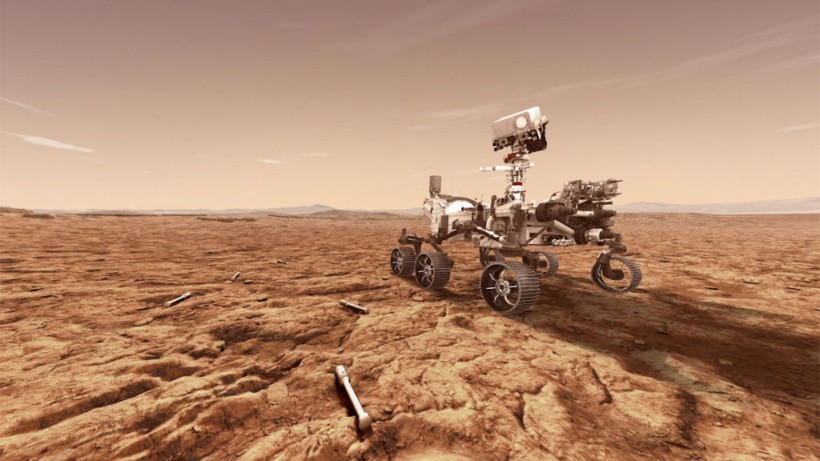For the past year, NASA's Perseverance rover has been capturing ambient sounds on Mars, and scientists have whittled the recordings down to a five-hour "Martian playlist."

NASA’s Perseverance rover is currently in its second year on Mars. Perseverance is now venturing to an ancient river to examine previous evidence of life on Mars.
Mars Soundscape
Last year, audio from the Mars rover was released, but none of the noises were particularly appealing to the ear, probably owing to electromagnetic interference.
The sounds are strangely quiet and provide a different perspective on the Martian landscape. They've already aided in the confirmation of several hypotheses regarding how sound travels around the world, as per the report of Gizmodo.
Due to the Martian atmosphere being 1% as dense as Earth's, audio heard on Mars would sound like it was coming through a wall, according to Baptiste Chide, a planetary scientist at Los Alamos National Laboratory.
Chide, on the other hand, was surprised by how calm Mars was. "It's so quiet that we thought the microphone was broken at one point," Chide said via the Acoustical Society of America.
How Was the Sound of Mars Utilized by Scientists?
Gizmodo reported that the SuperCam microphone was used by Chide's team to test the speed of sound on Mars in March. More recent research used both microphones to analyze Mars' acoustic environment, as well as close and far sound sources to demonstrate how the planet's carbon dioxide-rich atmosphere influenced sound's capacity to travel.
Mars has a far thinner atmosphere than Earth and therefore much cooler. As a result, NASA scientists predicted sound to travel slower on Mars, which it did. Higher-frequency sounds also moved faster than lower-frequency noise, according to the study.
Throughout Mars' 687-day year, the planet's sound will change. Carbon dioxide in the planet's polar regions freezes during the Martian winter, causing sound volume to fluctuate. So pay attention. We should be obtaining a more broad array of Martian mixtures soon if Perseverance works as its name suggests.
Read More: NASA's Perseverance Rover Reaches Ancient River Delta on Mars
How Does the Perseverance Rover Record These Sounds?
In February 2021, the Perseverance rover landed on Mars carrying an array of technologies aimed at determining whether Mars ever housed microbial life in the past. Aside from the science instruments, the rover was also equipped with two microphones manufactured from off-the-shelf components, which were used to record the first audio data on Mars.
One of Perseverance's microphones is affixed to the rover's frame, slightly above one of its wheels. The microphone is coated in mesh to protect it against Martian dust, which is blown up by the planet's winds and may be lethal to spacecraft. The other microphone is attached to the rover's SuperCam, which hangs on an arm above the rover's frame and is one of the machine's major cameras.
As a result, the researchers discovered that the latter microphone picked up sounds from the rover's movements whereas the former microphone picked up sounds from the wind blowing around the rover. Even when the rotorcraft was nearly 300 feet distant, the microphones picked up the whine of the Ingenuity helicopter in flight.
Related Article: #SpaceSnap: NASA Perseverance Rover Looks Back at Wheel Tracks













